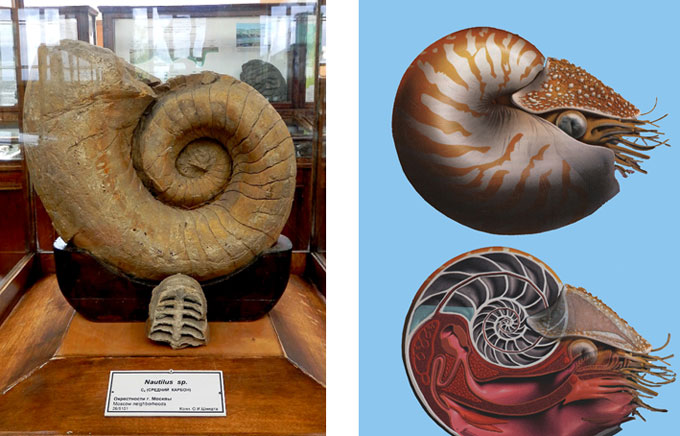NAUTILUS is the only surviving genus of a subclass of marine ectocochleate cephalopods. The name is translated from Latin as a “shiplet”. It exists on Earth since the Cambrian of the Paleozoic, over 600 million years.
The shell of the mollusk is spirally twisted and divided into chambers by partitions; the body is placed in the largest last chamber. The remaining chambers are not inhabited, connected by a thin tube (siphon), and form a hydrostatic apparatus. Through the siphon, the chambers can quickly fill with gas or water, allowing the mollusk to move, float, or sink.
Large head accommodates eyes and numerous antenniform limbs, gathered around the mouth into two corollas, external and internal one. The head is covered with a massive lobe, a hood covering the inlet of the shell. The mouth accommodates a pair of horny jaws. Modern species of nautilus live in the Pacific and Indian Oceans at depths of 100-600 m and make daily up and down migrations, sometimes moving over relatively long distances.
Nautiluses are predators, they capture small invertebrates with their tentacles, sometimes attack worms, other mollusks, and small fish, and can also feed on carrion.
Nautilus meat is consumed, but they are caught mainly for their beautiful nacre shells, which are used to make jewelry and souvenirs.

Shell of Nautilus sp., appearance and section